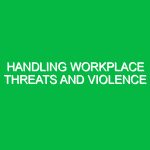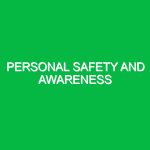Understanding the Active Shooter Response Plan
In an era where workplace safety is paramount, the need for an effective Active Shooter Response Plan (ASRP) cannot be overstated. An active shooter situation is an unpredictable and often chaotic event, where an individual is actively engaged in killing or attempting to kill people in a confined and populated area. The repercussions of such incidents can be devastating, not only for the immediate victims but also for the larger community and organization involved.
The relevance of an Active Shooter Response Plan within the Health, Safety, and Environment (HSE) domain lies in its potential to save lives. An ASRP equips employees with the knowledge and skills necessary to respond effectively during such crises. According to the FBI, the number of active shooter incidents in the United States has been on the rise, making the implementation of a comprehensive response plan a critical necessity for organizations across all sectors.
Identifying Hazards and Risks Associated with Active Shooter Incidents
Active shooter incidents present a myriad of hazards and risks that can jeopardize the safety and well-being of individuals within a workplace.
1. Physical Harm
The most immediate and apparent risk during an active shooter event is physical harm. Firearms can inflict devastating injuries or fatalities. The psychological impact of such events can also lead to long-term mental health issues for survivors, including post-traumatic stress disorder (PTSD), anxiety, and depression.
2. Panic and Chaos
In the face of danger, individuals often react impulsively. This can lead to panic, chaos, and potentially more injuries. For instance, during the tragic Sandy Hook Elementary School shooting in 2012, the chaos that ensued limited response efforts and escalated the tragedy.
3. Delayed Emergency Response
Emergency services may encounter challenges in accessing the scene due to misinformation or bottlenecks created by panicked individuals. This delay can exacerbate injuries and fatalities.
4. Secondary Attacks
In certain situations, attackers may employ secondary devices or ambush tactics. This unpredictability necessitates a thorough understanding of the situation at hand and how to respond to evolving threats.
Safety Precautions and Best Practices for Active Shooter Response
With the gravity of the risks associated with active shooter incidents, implementing effective safety precautions and best practices is crucial.
1. Training and Drills
Regular training and drills are essential components of an effective ASRP. Organizations should conduct drills to familiarize employees with escape routes, safe rooms, and the proper procedures to follow during an active shooter event. For example, a manufacturing plant might schedule quarterly drills that simulate an active shooter scenario, allowing employees to practice their responses in a controlled environment.
2. Communication Plans
Clear communication during a crisis can save lives. Organizations should establish communication plans that detail how to alert employees about an active shooter situation. This may include text alerts, intercom announcements, or designated emergency response teams. An incident at a university can illustrate this point; when an active shooter was reported, immediate alerts allowed students to lock down or evacuate timely.
3. Establishing Safe Zones
Identifying and preparing safe zones within the workplace is vital. These areas should be secure, easily accessible, and stocked with emergency supplies. For instance, an office building might designate specific floors as safe zones, equipped with first aid kits and communication tools.
4. Access Control Measures
Implementing access control measures, such as badge systems or security personnel at entrances, can deter potential shooters. After the tragic events in Las Vegas in 2017, many organizations reconsidered their security infrastructure to prevent unauthorized access.
5. Psychological Support Resources
Recognizing the emotional toll of active shooter incidents is critical. Organizations should provide psychological support resources, such as counseling services, for employees affected by such events. This was notably seen in the aftermath of the Orlando nightclub shooting, where many survivors sought counseling to cope with their trauma.
Regulations and Standards Governing Active Shooter Response Plans
While there’s no single federal law governing active shooter response plans, various regulations and guidelines can inform their development.
1. Occupational Safety and Health Administration (OSHA)
OSHA mandates that employers provide a safe workplace. While not explicitly requiring active shooter plans, OSHA emphasizes the importance of hazard assessments and emergency action plans, which can encompass active shooter scenarios.
2. National Fire Protection Association (NFPA)
The NFPA outlines guidelines for emergency planning and response. Their codes can help develop components of an ASRP, especially in terms of evacuation procedures and safe room protocols.
3. Federal Bureau of Investigation (FBI)
The FBI provides resources and training materials for organizations to develop effective active shooter response strategies. Their “Active Shooter: How to Respond” guide is particularly useful for organizations looking to create a comprehensive ASRP.
4. American Psychological Association (APA)
The APA offers guidelines on psychological preparedness and response, emphasizing the importance of mental health resources following a traumatic event.
Conclusion: The Importance of Preparedness
An effective Active Shooter Response Plan is not merely a checklist; it is a commitment to safeguarding employees and creating a culture of preparedness. The stakes are high, and the potential for loss is immense. By proactively addressing the risks and establishing comprehensive safety protocols, organizations can not only mitigate the impact of such tragic events but also foster a sense of security among their employees.
In a world where active shooter incidents, unfortunately, seem to be on the rise, the time to act is now. By embracing a robust ASRP, organizations demonstrate their commitment to health, safety, and the environment—not just as compliance, but as a genuine concern for the well-being of their most valuable asset: their people.


